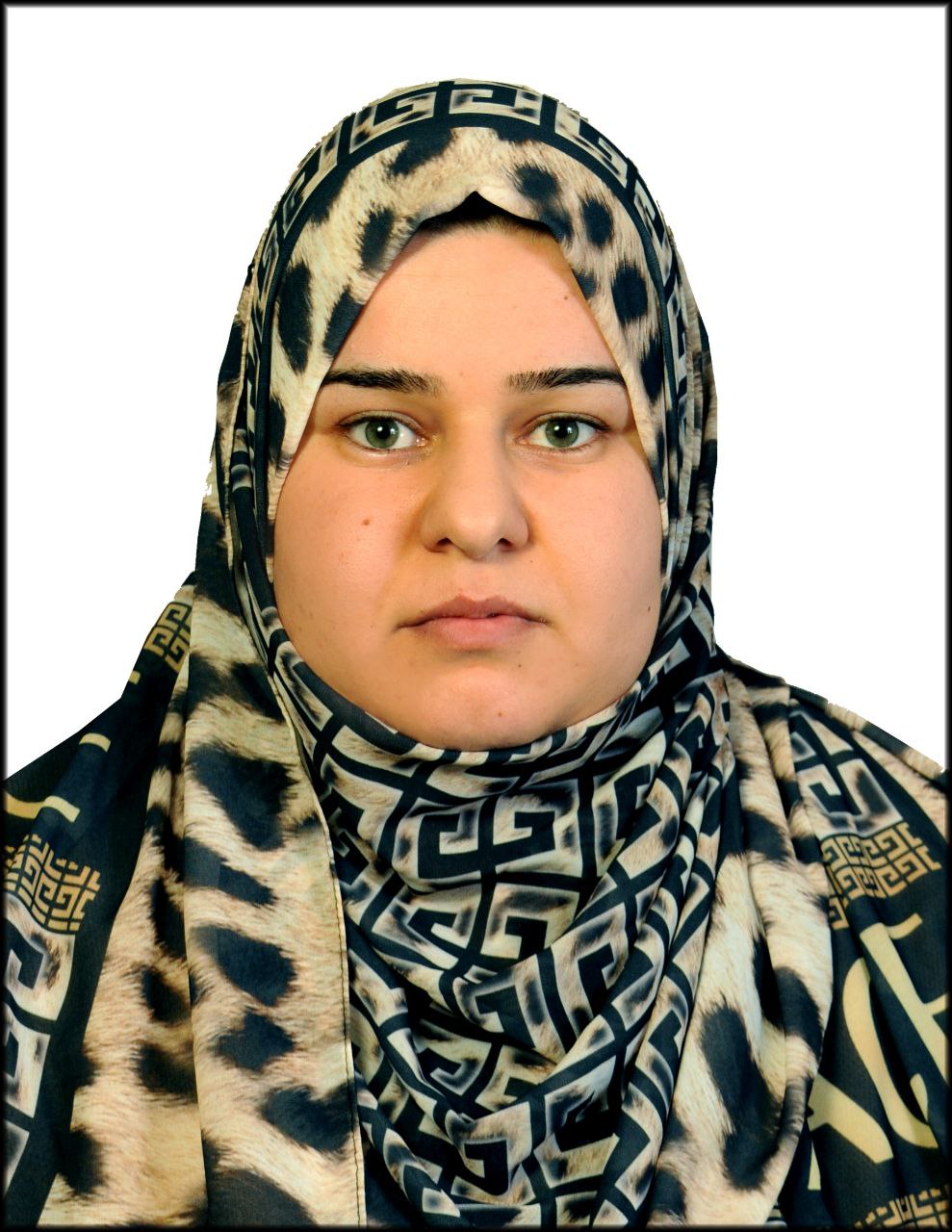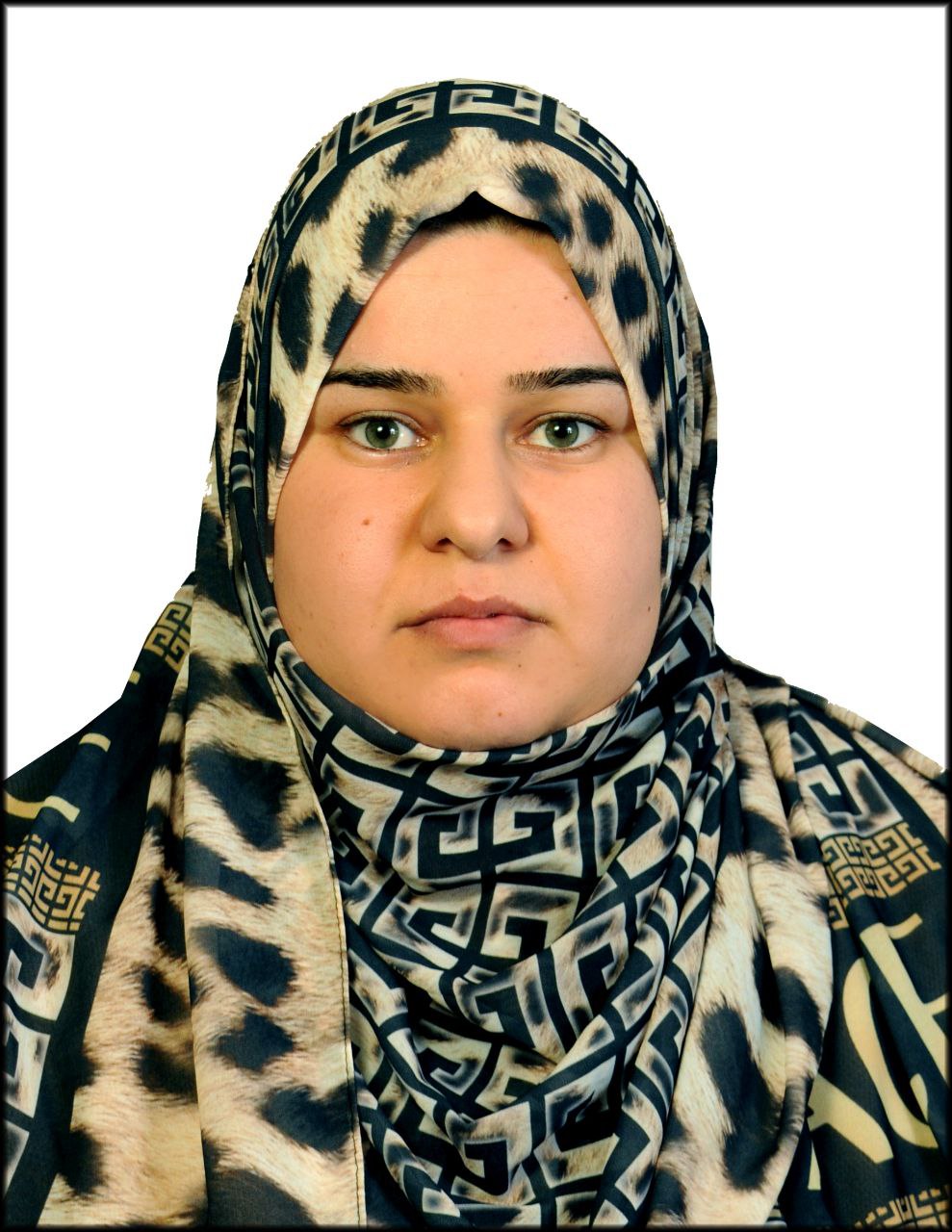
Saffanah Ayed Hussein
Research InterestsLinguistics
Discourse Analysis
Critical Discourse Analysis
and Multimodality
| Gender | FEMALE |
|---|---|
| Place of Work | Mosul Medical Technical Institute |
| Position | Mosul Medical Technical Institute/ Technical Nursing Department |
| Qualification | Master |
| Speciality | Master's degree in Linguistics and English Language as a Foreign Language |
| saffanaayed4@ntu.edu.iq | |
| Phone | 07739038415 |
| Address | Mosul Al Gadedh, Nineveh, Mosul, Iraq |

Assistant Lecturer Saffanah Ayed Hussein is a faculty member at Northern Technical University, Mosul Technical Medical Institute, in the Nursing Technologies Department. She is a distinguished academic researcher and currently holds the position of Assistant Lecturer in the same department, where she contributes to the development of the academic and research fields.
She obtained her master's degree in 2020 from the College of Basic Education at the University of Mosul. She has published numerous research papers, and her work has been cited by both Arab and foreign authors. Her research interests primarily focus on discourse analysis, critical discourse analysis, and multimodal discourse analysis.
80 +
Developing the English materials
Skills
Good in using Computer (70%)
English Language (90%)
Linguistics fields like discourse analysis and multi critical discourse analysis (90%)
image analysis, text analysis (90%)
Academic Qualification
ماجستير في علم اللغة واللغة الانكليزية كلغة اجنبية
Mar 5, 2020 - May 7, 2020ركز البحث على تحليل الحوار الخطابي للقصة القصيرة, و ها التحليل يظهر كيفية بدء الحوار,تطوره, ثم نهايته ويظهر ايضا مشاركة الشخصيات تفاعلها, وطبيعة
.العلاقات فيما بينها و كيف تعرض في القصة . كيف يقاطع بعضهم بعضا ويسالون الاسئلة وكيف توزع الادوار بينهم. وذلك باعتماد (النحو الانكليزي العملي) لعام 1986 (النسخة الرابعة) للمؤلفين ثومسن و مارتنيت.
Working Experience
English Language, Medical Terminology [Asst. Lect]
Jun 4, 2023 - PresentAl Khatabee is teaching nursing and English materials within her specialty in Nursing Techniques .
Publications
Hymes and Sacks Models in Discourse Analysis of Short Story
Mar 9, 2020Journal College of Basic Education Researchers Journal
publisher College of Basic Education Researchers Journal
Issue 4
Volume 16
Discourse analysis is an instrument which is used in analyzing elements that influence our understanding of a particular text. Thus, discourse analysis is a highly coherent model in analyzing any spoken or written texts like conversation short story. The aim of this study is to analyze a short story and to show how the discourse is initiated,, how the characters participate, interact and what are the relationships among them, how those characters are introduced in the story; how they interrupt, ask questions, and how turns are distributed. The study also aims at counting the number of topics and how they are interrelated and to know whether the sequence of events is logical or not. In order to achieve these aims, the study investigates the discourse of a written text of a short story namely, The Man of the House, by analyzing and describing the different strategies , developing, and terminating. The study adopts an eclectic model namely; Hymes's model (1972) who suggests the category of "speech event", and Sacks's model (1968) which proposes interaction analysis based on four categories "conversation", "topic", "sequence", and "turn". The present study hypothesizes that discourse analysis is conducted depending on the text and context and how the two terms complete each other. The meaning of the text is completed by action. Analysis is to be achieved structurally and linguistically. Throughout the analysis, it has been found that the participants perform different speech events. In the analysis of speech events, the number of major events is 22 which forms (24.5%), while the number of minor events is 68 which forms (75.5%). It is clear that the number of minor events is more than major events because the writer was interested in giving details. He described the places, and the actions of the participants. To sum up, the events are logically sequenced. It is worth mentioning that the participants in the story are of different social classes. The participants sometimes address each other by using terms of address in order to show respect; especially since some of them are of higher status. The story is narrated in the first person pronoun ( I ), which means that the writer talks about his personal life. Sullivan did most of the turns, (41) which represents 47.6% of the total turns as he is the protagonist and the most important participant in the story. Dooley had (14) turns so that she came second in order that represents 16.2%. The mother came third in rank and did (13) turns which represents 15.5%. Some of the participants participated in conversations more than others: Dooley and Sullivan for instance participate in 12 turns which represents 29.2%, while Minnie and Sullivan participate in 9 turns which forms 21.9%. It is also found that the discourse is composed of the cooperating acts, interaction of the participants, sequence of events, topics, and other units. Discourse analysis shows when and where the turns and topics are shifted, and changed. The use of fillers, such as (Ah) and (Oh), is important and related to the use of discourse; (Ah) occurs 8 times that is 72.7%, whilst (Oh) occurs 3 times that is 27.2%. The use of fillers is varied according to their function. Finally, the linguistic analysis of literature has many implications and benefits for language teaching.
Diiscourrse Anallysiis off Shorrtt Sttorry ''The Man off tthe House''
May 7, 2020Journal College of Basic Education Researchers Journal
publisher College of Basic Education Researchers Journal
Issue 3
Volume 16
Discourse analysis is considered as an instrument in analyzing elements which influence on our understanding of a particular text. Thus, discourse analysis is a highly coherent model in analyzing any spoken, like conversation, or written, like short story text. The aim of this study is to analyze the discourse analysis of a short story, to show how the discourse is initiated, developed and terminated. How the characters participate, interact and what are the relationships among them, how those characters are introduced in the story; how they interrupt, ask questions, and how turns are distributed. The study also aims at counting the number of topics and how they are interrelated. To know whether the sequence of events is logical or not, and to know the fillers (Ah, Oh) and their functions. Further, the study tries to analyze a short story fro the grammatical point of view for stylistic characterization relying on (A Practical English Grammar) (1986) (Fourth Edition) by A. J. Thomson and A. V. Martinet. Also, to determine the speech acts and their percentages. In order to achieve these aims, the study adopts the discourse analysis of a written text of a short story namely, The Man of the House, by analyzing and describing the different strategies like initiating, developing, and terminating. In this study, the model of discourse analysis is eclectic, comprising of three models; Hymes model (1972) who suggests the category of "speech event", and Sacks model (1968) which proposes interaction analysis based on four categories "conversation", "topic", "sequence", and "turn". Finally Sinclair-and Coulthard’s model (1975) of speech acts classification. The present study hypothesizes that discourse analysis is conducted depending on the text and context and how the two terms complete each other. The meaning of the text is completed by action. Analysis is to be achieved structurally and linguistically. It is also found that the discourse is composed of the cooperating of acts, interaction of the participants, sequence of events, topics, and other units. Throughout the analysis, it has been found that the participants perform different speech acts such as nomination which is the most frequently used. The frequency of nomination is 1156 which represents 52.3% of the total acts, reaction forms 555 which represents 25.1%. Evaluation records 198 which represents 8.9% of the total number of acts. There are other speech acts like comment, obligation, manner, and metastatement mentioned in the story. These acts vary according to their usages and functions, and percentages.






